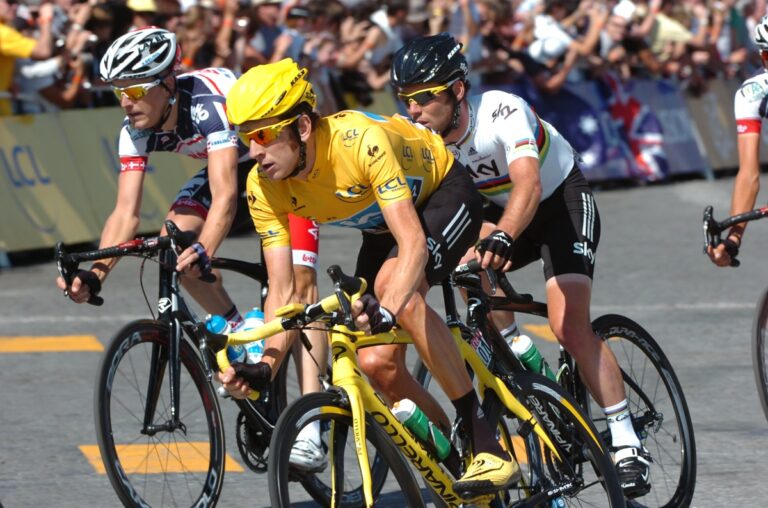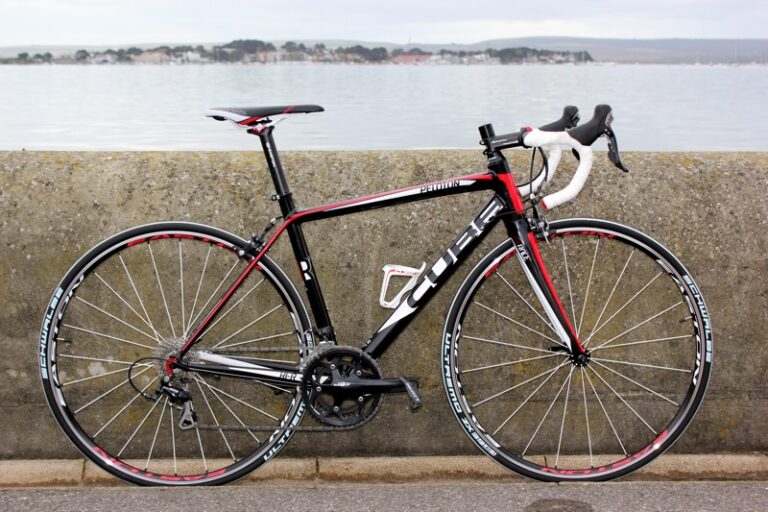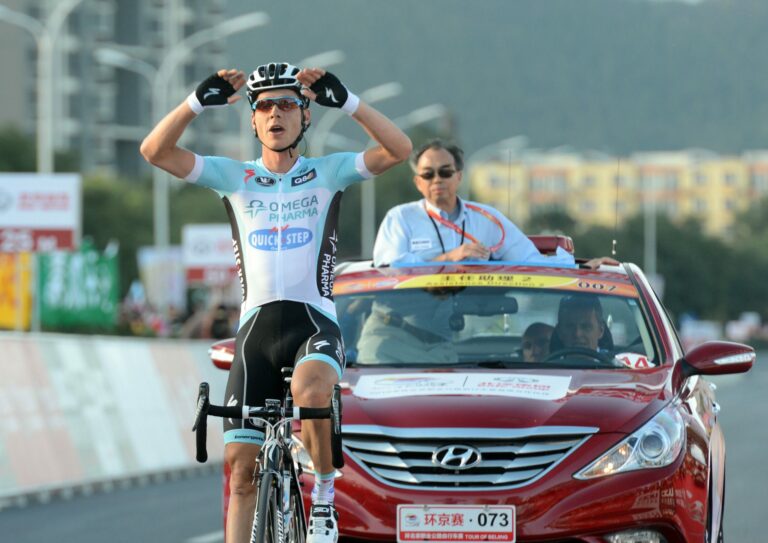Phil White is one of cycling’s innovators.
The engineering-led approach of his Cervelo company has given cycling the aero road bike and what he claims with quiet assurance to be the world’s lightest production frame in the R5 California, a machine ridden to victory in this year’s Giro d’Italia by Ryder Hesjedal.
The P5 time trial bike released earlier this year features the RT8 TT hydraulic rim brake; a result of Cervelo’s work with Magura, and a development he says offers greater benefits than the much-discussed concept of disc brakes for road bikes. His company has in recent years run its own WorldTour team, and supplied bikes to others, notably securing victory for Carlos Sastre in the 2008 Tour de France, and now partners Garmin-Sharp.
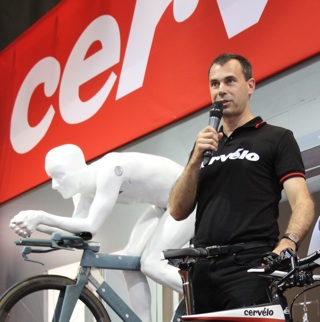
Disc brakes for road bikes have been discussed ad infinitum. White agrees that it’s a development that will happen “whether it make any sense or not”. His analysis is that current designs do not make sense. Cervelo’s calculations have shown a rotor of between 180mm and 200mm would be required to slow the bike effectively. “That’s not light. It’s got issues, but if you want an effective road racing disc brake, it’s going to have to be that large. No one is really doing that yet.”
He has no reservations, however, about the performance of hydraulic brakes, a system he says offers greater power and improved modulation. White’s preferred solution is a hydraulic rim brake, a system deployed on the P5 time trial bike in the shape of Magura’s RT8 TT. “What makes sense is that classic English touring bike, or winter bike, with a long reach caliper: long reach brakes with more tyre clearance. It doesn’t look as radical [as disc brakes] but it’s been around for a while and it’s technology that works really well,” says White.
Designs that appear for the first time in the public domain at races are, ideally, not new to the team, White says. Racing is the last of a ‘fairly rigid’ four-step testing process that also includes development, factory testing, and training. Rider feedback is absorbed in the company’s strategic plans of two or three years.
Cervelo’s ‘bike strain gauge’, a jig displayed at Eurobike and more recently at a fan ‘rideout’ event with members of Garmin-Sharp’s Tour of Britain squad, mimics the stresses and strains exerted by a rider on the frame, a further example, says White, of the team’s influence on the company’s testing protocols.
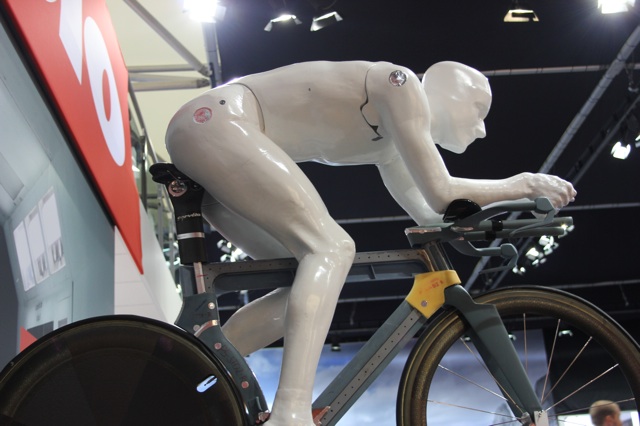
Rider input was absent from ‘industry tests’, says White, a standard he regards with some skepticism (“Everyone says, ‘we do the same thing as Cervelo’”). “We found that the industry tests don’t match reality. The big input from the riders was, ‘This is the way we ride the bike and it’s not the way you actually test the bike’. So we developed a bunch of new tests that mimic the way the rider actually rides the bike.
“We found with all those industry tests, they forgot a key element: the rider. A rider is, say, 75kg and the bike is, what, a tenth of that? The rider has a big influence on what’s happening on the bike and none of the tests incorporated the effect of the rider’s weight and inertia.”
Another area in which the bicycle industry has found no common standard is the weighing of bikes, an astonishing oversight given the impact of a bicycle’s weight on its performance and the importance placed on it by consumers. Cervelo’s stance is straightforward, says White. The frame from which the official weight is reported is one ready to be ridden: painted, equipped with “all the bolts, all the hardware”, and sized 54cm or 56cm. A ‘latitude band’ exists, he admits (variance in the parts, and even the paint) but the policy is pursued despite the ‘beating’ White claims his company takes on sales lost to consumers who accept unrealistic frame weights.
Listening to the team’s requests is only one part of digesting rider feedback. Accurately interpreting their requirements is a separate skill. In short, the common call from professional riders has been for lighter bikes; greater performance, and greater satisfaction, however, has come from stiffer bikes. White recalls that two versions of the R2.5 were made: the standard, and a very limited edition, one of which was ridden by Carlos Sastre around 2004. “People wondered why it disappeared. Well, that was because we found it wasn’t a better bike. We really accelerated our work on that with the R3.”
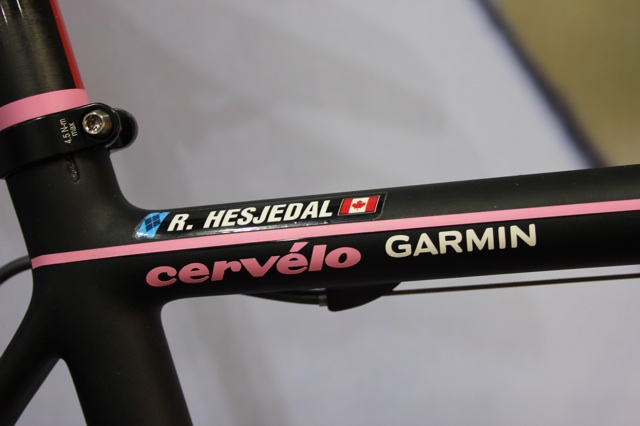
For several years, Cervelo was perhaps unique in manufacturing aero road bikes, a design philosophy now adopted by some of the world’s biggest bike brands (see Scott’s Foil, for example, or Trek’s new Madone 7). Cervelo’s model line was split in the early 2000s into the aero-profiled S-series and the more conventionally-shaped R-series. “It’s up to us to convince the customer which is the better bike for them,” says White. “In most cases, in our opinion, it’s the aero bike.”
While the wind cheating benefits apparent from the tube profiles are backed by wind tunnel data, additional weight is the elephant in the aero bike’s sitting room. White acknowledges the challenge. “It’s tough to do,” he admits. “You’ve got to make it aero, which generally makes it thinner, and when you make it thin, you take away the stiffness. The stiffness is a function of the square of the thickness of the tube: if you make it half as thin, you only get an eighth of the stiffness. It has a huge influence on it.”
As might be expected, White is unequivocal in his belief in the advantages of aero road bikes. “Aerodynamics are always ‘on’,” he says, ‘aero is always helping you.” Cervelo had been ‘shouting into the wind’ about the benefits of aero road bikes for more than 15 years, he claims, and welcomes the recent conversion of a host of manufacturers, while insisting the designs of rival brands are based on those introduced by Cervelo more than half-a-decade ago (specifically the S2 and S3).
Selling aero road bikes, he admits, is both easy and difficult. The ease comes with the results delivered from what he claims are faster bikes on all but the steepest climbs; the difficulty in producing machines whose profiles will not be attractive to all. “I think the industry is saying now that an aero road bike is a faster bike. The question now is, how do we make a great aero road bike? It’s more of an engineering challenge, for sure.”
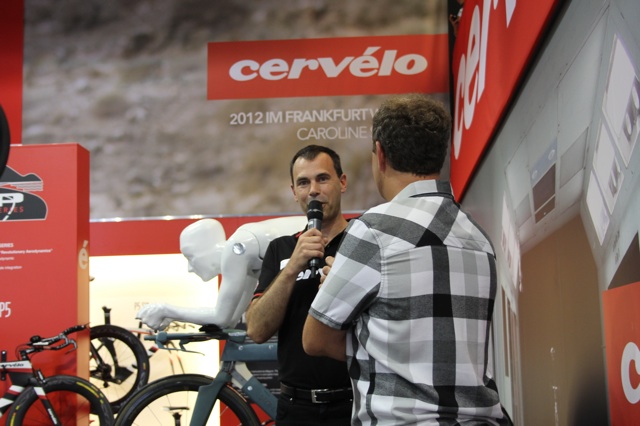
‘Engineering’ is a word that occurs frequently throughout our conversation, and a perspective reflected in Cervelo’s presentation. Cervelo’s website is filled with calculations and scenarios. The company no longer funds its own WorldTour team, but in Garmin-Sharp (formerly Garmin-Cervelo), has a partnership that allows its designs to be tested in the most unforgiving environments. While rival brands offer the consumer a chance to choose his own paint scheme, any inducement to buy a Cervelo is limited to entirely to its performance. “The fact is, it’s all engineering-based, it’s authentic, it’s not made up marketing stuff. It’s very easy from that respect.”
Cervelo was acquired in February by PON Holdings, the Dutch owners of Derby Cycles, who in turn own Focus Bikes and Raleigh. White insists that his vision for the company will not be compromised; that PON have in effect asked him to continue with a successful formula. His goal is to instill his values in Cervelo to the extent that the company can run without him. He compares the situation to the design and manufacture of the bikes, tasks he once completed personally, but now carried out by a team he has assembled. Having built the bikes that established the company, he is now focussed on building the team that will sustain it.
The contemporary road bike is a vastly different machine even to models of 10 years ago. White says the relentless pace of development makes bicycle development an exciting area to work in. He speaks of a friend, a professor living in Switzerland, who tracks the development of technology. Sporting goods, the professor says, is the area with the greatest development, outpacing the automotive and aerospace industries. The former, says White, is hamstrung by what he describes as ‘high volume, cost driven manufacturing’, while development in the latter is slowed by the necessities of rigorous testing and the lifecycle of the aircraft, one necessary to recoup the massive investment required to design, build, and test it.
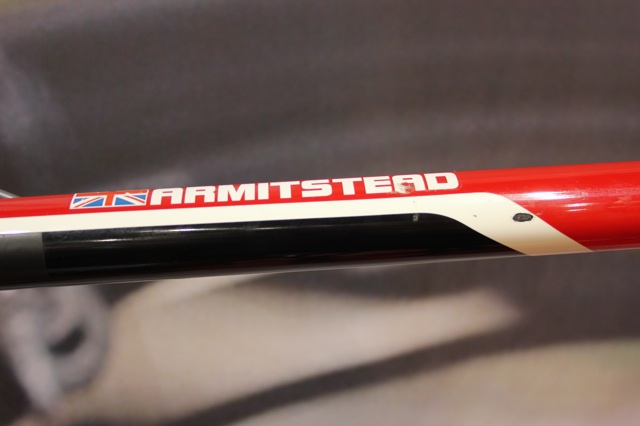
An original R2.5 kept in his office gives White a frequent reminder of the strides the company has taken. “The latest generation of bikes are massively better than a generation ago, even three or four years ago. I think we’ve seen a huge transformation and that’s helping fuel getting more people on bikes, because it’s a more enjoyable ride. Bicycles are more comfortable, they’re easier to handle, they’re faster; everything about it is better, and that can only help. When you throw your leg over a bike of 20 years ago, you say, ‘Man, there have been some big improvements’. You don’t realise it, because it’s been incremental.”
White says he has “a bunch of irons in the fire,” and whatever is coming next from Cervelo is unlikely to be conventional, given the firm’s history of innovation. He speaks of leading, rather than following, and points, with some justification, to the introduction of the aero road bike as evidence of Cervelo’s ability to do so.

